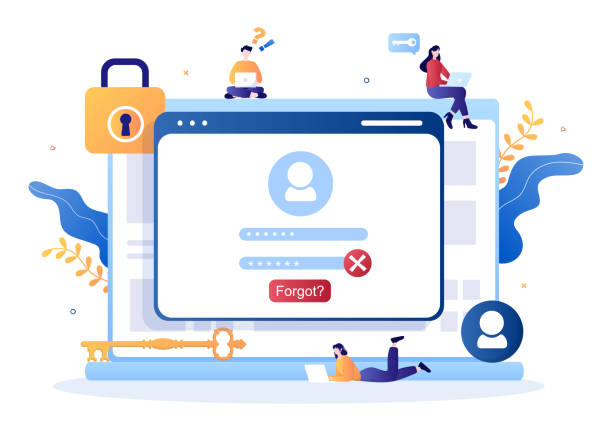An Introduction to the Importance of Secure Website Design in Today’s Digital World
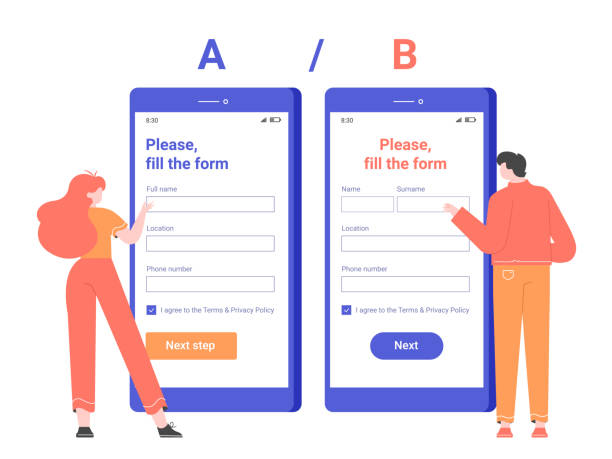
In the present era, where our daily lives are increasingly intertwined with the online space, #cybersecurity and #data_protection have become more important than ever.
#User_trust in websites, which is the backbone of the digital economy, remains steadfast only when their information is safe from #online_threats.
This is where the concept of secure website design gains meaning.
The primary goal of secure website design is not only to prevent unauthorized access to data but also to ensure the stability and proper functioning of online services against various attacks.
Without a comprehensive approach to security from the very initial stages of design, any website can become an easy target for attackers.
The consequences of a security breach can include loss of reputation, huge financial losses, and even legal issues.
Therefore, understanding the necessity and implementing the principles of secure website design is crucial not only for developers but also for all businesses with an online presence.
This preventive approach lays the foundation for a reliable and stable digital platform, and investing in it guarantees survival in today’s competitive world.
Is your current e-commerce website design causing you to lose customers and sales?
RasaWeb is your solution with modern and user-friendly e-commerce website designs!
✅ Significant increase in conversion rates and sales
✅ Strong branding and building customer trust
⚡ Get a free consultation for e-commerce website design from RasaWeb!
Fundamentals and Key Principles for Designing Secure Websites
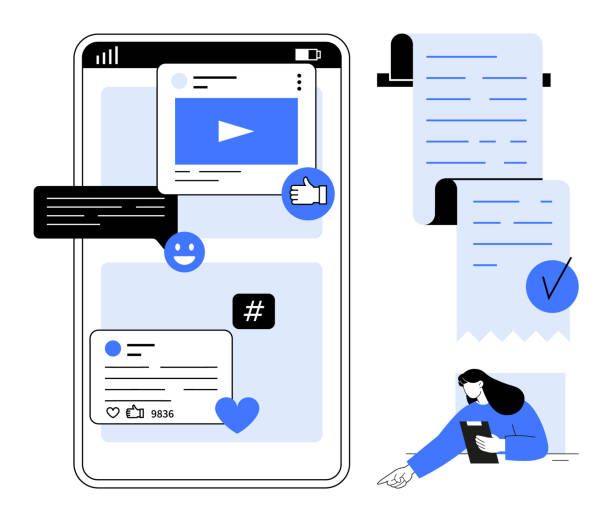
To achieve secure website design, specific fundamentals and principles must be considered from the very initial phases of the project.
The first step is implementing secure coding; this means developers must be familiar with common cyber attack patterns and avoid writing code that could lead to vulnerabilities.
Input Validation is one of the most important of these principles.
All data entered by the user into the system must be thoroughly checked to prevent the injection of malicious code or unauthorized data.
Authentication and authorization systems must also be extremely robust; using complex passwords, two-factor authentication (2FA), and proper Session Management are key components.
Furthermore, the use of secure protocols like HTTPS with SSL/TLS certificates for encrypting communications is of high importance.
Continuous updating of software, frameworks, and libraries used, as well as proper configuration of servers and databases, are also part of these fundamentals.
Secure website design is an ongoing process that requires attention to detail at all stages of the web development lifecycle, and only by adhering to these principles can the stability and security of a website be ensured.
Common Vulnerabilities and Secure Website Design Solutions
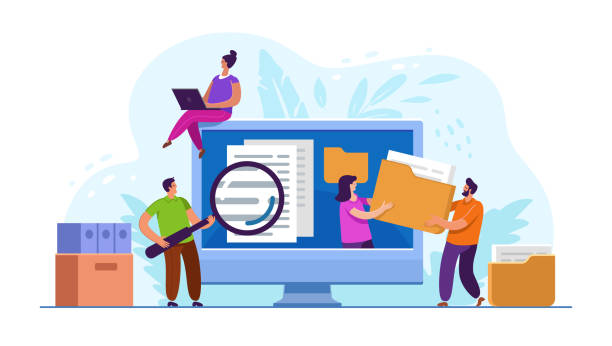
In the process of secure website design, familiarity with the most common web vulnerabilities and ways to counter them is crucial.
One of the most notorious attacks is SQL Injection, which allows an attacker to gain access to or manipulate the database by injecting malicious SQL code into application inputs.
The solution to counter it is to use Prepared Statements and rigorous input validation.
Another is Cross-Site Scripting (XSS), where an attacker injects malicious script code into a website, and unaware users’ browsers execute it.
To counter XSS, all user outputs must be sanitized before display.
Cross-Site Request Forgery (CSRF) is also a type of attack in which an attacker deceives a user into performing an unwanted operation on an authenticated website.
Using CSRF tokens and verifying the origin of requests can be effective against these attacks.
Countering these vulnerabilities requires a comprehensive and continuous approach to security, and a deep understanding of how each attack works is essential for any developer looking to secure the web.
Below is a table of common vulnerabilities and solutions for securing online platforms:
| Vulnerability Name | Brief Description | Main Security Solution |
|---|---|---|
| SQL Injection | Injecting SQL codes into inputs to access or manipulate the database. | Using Prepared Statements and Input Validation. |
| Cross-Site Scripting (XSS) | Injecting malicious scripts into web pages that are executed by the user’s browser. | Output Sanitization/Encoding. |
| Cross-Site Request Forgery (CSRF) | Deceiving a user to perform an unwanted operation on authenticated websites. | Using CSRF tokens and checking Origin. |
| Broken Authentication | Weaknesses in authentication systems and session management. | Using 2FA and secure session management. |
Practical Guidelines for Web Developers

For developers looking to implement secure website design, adhering to certain practical procedures is essential.
Firstly, security thinking must be considered from the very beginning of the Software Development Life Cycle (SDLC); meaning security should not be an additional feature added at the end, but rather must be incorporated into all stages of design, coding, testing, and deployment.
Using modern and reputable web frameworks that embed security principles can be a great help.
These frameworks often have built-in solutions for common vulnerabilities like XSS and CSRF.
Continuous training of the development team on the latest threats and best security practices is also very important.
Holding regular training courses and promoting a culture of security within the team helps increase awareness and reduce human errors.
Furthermore, conducting regular Penetration Testing and security assessments by independent specialists helps identify and fix hidden weaknesses.
Using Static and Dynamic Application Security Testing (SAST/DAST) tools can also help automate the process of identifying vulnerabilities in early development stages.
Every line of code written must be reviewed with its potential vulnerability in mind.
These recommendations collectively contribute significantly to web security and the creation of a more trustworthy online environment.
How much does losing business leads due to an unprofessional website cost you? Solve this problem permanently with a professional corporate website design by RasaWeb!
✅ Increase credibility and trust of potential customers
✅ Easier attraction of new business leads
⚡ Get a free consultation right now!
Analyzing the Impact of Cyber Attacks on Businesses and Website Protection
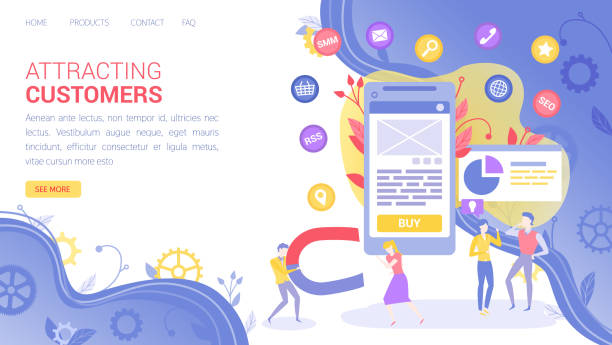
Cyber attacks are not just about data loss; they can have widespread devastating impacts on businesses that go beyond technical aspects.
One of the most significant of these impacts is the loss of reputation and customer trust.
When a website is targeted by an attack and user information is leaked, customers feel that their data is not secure and are likely to turn to more reliable competitors.
This can lead to a drastic reduction in revenue and market share.
Furthermore, the direct and indirect costs resulting from a cyber attack are staggering; these costs include system recovery costs, notifying affected customers, legal fees, and penalties related to data protection regulation breaches (such as GDPR).
For example, companies that have failed to adequately protect their website have been forced to pay millions of dollars in fines and compensation.
Even after the issue is resolved, negative impacts on the brand may persist for years.
From an operational perspective, DoS/DDoS attacks can cause service disruptions, resulting in financial losses due to customers’ inability to access online services.
Therefore, investing in secure website design and comprehensive cybersecurity strategies is not merely a technical requirement, but a strategic investment for the survival and growth of any business in the digital world.
Is Website Security an Illusion? Questionable Content

A question that constantly occupies the minds of specialists and users is: Is achieving absolute security in websites truly possible? Or is secure web design ultimately an illusion that can never be fully attained? It is a reality that the cyber space is constantly evolving; with every new defense created, more sophisticated attacks emerge.
This is an endless cat-and-mouse game where attackers are constantly looking for new weaknesses.
Hackers are highly creative and can exploit unknown vulnerabilities (Zero-Day) or even small mistakes in system configurations.
Even with adherence to all best practices and the use of the most advanced tools, the human factor can be the greatest weakness. Employee mistakes, phishing scams, and social engineering remain major avenues of intrusion.
Therefore, perhaps the main goal in secure web design is not to achieve absolute security, but rather to continuously increase resistance to attacks and reduce reaction and recovery time after a breach occurs.
Instead of focusing on the impossibility of complete security, the focus should be on creating multiple layers of defense and continuously improving security processes.
This realistic approach allows for risk management and minimizing the impact of attacks, even if we can never achieve 100% security.
Recent News and Trends in Web Cybersecurity and the Importance of Website Security

The world of web cybersecurity is rapidly changing, and every day we witness the emergence of new threats and attack methods.
In recent years, we have seen a significant increase in Ransomware attacks and Supply Chain Attacks, which can have devastating effects due to the interdependence of systems.
Also, attacks based on artificial intelligence and machine learning are on the rise; attackers use these technologies to automatically identify vulnerabilities and create more sophisticated malware.
On the other hand, the trend of using Progressive Web Apps (PWAs) and microservices architectures has also created new challenges for website security, requiring different and more complex security approaches.
New data protection regulations like GDPR in Europe and CCPA in California mandate companies to adhere to higher security standards and incur heavy penalties for non-compliance.
These news and trends indicate that secure website design is no longer an option but an undeniable necessity for every organization.
Awareness of these developments and continuous adaptation to them are crucial for maintaining the stability and security of online services.
Companies must adopt a proactive approach and constantly evaluate and strengthen their systems against new threats.
The table below provides examples of recent news events related to web cybersecurity:
| Date (Example) | Event Type | Description | Impact on Web Security |
|---|---|---|---|
| 2023-08-15 | Ransomware Attack | A major software company was targeted by a ransomware attack. | Increased awareness of the need for backups and recovery protocols. |
| 2023-09-01 | Zero-Day Vulnerability | Discovery of a new vulnerability in a popular web platform. | Importance of quick patching and system monitoring. |
| 2023-10-10 | Retail Data Breach | Theft of credit card information of millions of customers from an online store. | Emphasis on payment security and encryption of sensitive data. |
| 2023-11-20 | Supply Chain Attack | Infiltration of a widely used open-source library and its infection. | Need for comprehensive security review of all dependencies in development. |
Behind a Successful Cyber Attack (An Entertaining Story)

It all began with a highly sophisticated phishing email.
“Behnam,” a support engineer at “Afagh Web” company, received an email seemingly from the CEO, asking him to download an attachment for “urgent project status review.”
The file, instead of being a document, was malware.
Unaware that he had fallen victim to a targeted attack, Behnam clicked on the file.
In a fraction of a second, the malware was deployed on his system.
This was the attackers’ entry point.
They used Behnam’s system access, which had high privileges on the internal network, for lateral movement.
Slowly and carefully, they searched for security loopholes in the company’s secure website design.
A small flaw in the test server configuration, which had remained hidden from the security team, allowed them access to the production database.
Customer information, unencrypted passwords, and financial data all fell into the attackers’ hands.
What followed was a nightmare scenario for Afagh Web: widespread data exposure, a sharp drop in stock prices, and the loss of trust from thousands of customers.
This true story shows how a small weakness, a simple human error, and the incomplete adherence to website security principles can lead to a major disaster.
This attack also serves as a reminder that website security is a collective responsibility that encompasses every employee up to the highest level of management.
Are you falling behind in the competition with large online stores?
RasaWeb, with its professional e-commerce website design, brings your business online and increases your market share!
✅ Enhanced brand credibility and customer trust
✅ Easy shopping experience leading to more sales
⚡ Take action now to get a free website design consultation!
Advanced Tools and Technologies for Secure Website Design

To effectively implement secure website design, developers and security specialists need a set of advanced tools and technologies.
Web Application Firewalls (WAFs) are among the most important of these tools, preventing attacks like SQL Injection and XSS by filtering and monitoring HTTP traffic between the web application and the internet.
Intrusion Detection Systems (IDS) and Intrusion Prevention Systems (IPS) also help identify and block suspicious network activities.
To ensure secure web development, Static Application Security Testing (SAST) and Dynamic Application Security Testing (DAST) tools are essential.
SAST examines the source code without executing it to find vulnerabilities, while DAST scans the running web application for weaknesses.
Web vulnerability scanners like Acunetix or Burp Suite are also very useful for automatically discovering security weaknesses in websites.
Additionally, the use of Identity and Access Management (IAM) systems for precise control over user permissions and Single Sign-On (SSO) to simplify the authentication process contributes to strengthening overall security.
These technologies, along with strong encryption protocols and regular security updates, are considered core components of a secure website design and enable organizations to be resilient against even the most sophisticated attacks.
The Future of Secure Website Design and Upcoming Challenges
![]()
The future of secure website design is constantly evolving with rapid technological advancements and the emergence of new threats.
One of the most important future trends is the increasing role of Artificial Intelligence (AI) and Machine Learning (ML) in cybersecurity.
These technologies can help identify complex attack patterns, predict future threats, and automate security responses.
However, simultaneously, attackers will also use AI to develop smarter malware and more complex attacks, creating a perpetual challenge.
Another challenge is the increasing reliance on cloud computing and serverless architectures, which, while increasing flexibility, also introduce new layers of security complexity.
The concept of “Zero Trust”, which by default trusts no user or device, is expanding as a pervasive security model.
Ultimately, continuous training and awareness-raising for human resources will remain one of the most vital aspects for website protection.
Because even the most advanced technologies will not be able to guarantee security without a correct human understanding of the risks.
Therefore, secure website design in the future will require a comprehensive, adaptable, and intelligence-driven approach.
Frequently Asked Questions
| Question | Answer |
|---|---|
| 1. What does secure website design mean? | Secure website design means creating a website that is resistant to cyber attacks and protects user and server information. |
| 2. Why is security important in website design? | To prevent data breaches, protect user privacy, maintain user trust, and avoid financial and reputational losses. |
| 3. What are the most common web vulnerabilities? | SQL Injection, Cross-Site Scripting (XSS), Cross-Site Request Forgery (CSRF), Broken Authentication, and Security Misconfiguration. |
| 4. How can SQL Injection be prevented? | By using Prepared Statements / Parameterized Queries, ORMs, and Input Validation. |
| 5. What is the role of HTTPS and SSL/TLS in website security? | HTTPS, using the SSL/TLS protocol, encrypts communication between the user’s browser and the server, preventing eavesdropping and data tampering. |
| 6. What measures should be taken to prevent XSS attacks? | Input validation, Output Encoding to prevent the execution of malicious code, and using Content Security Policy (CSP). |
| 7. What does a strong password policy include? | Enforcing the use of long passwords, a combination of uppercase and lowercase letters, numbers, and special characters, and preventing reuse. |
| 8. How does two-factor authentication (2FA) help with security? | Even if a user’s password is compromised, the attacker cannot log in without access to the second authentication factor (such as an SMS code or an app). |
| 9. What is a Web Application Firewall (WAF) and what is its use? | A WAF is a firewall that monitors and filters HTTP traffic between a web application and the internet to prevent common web attacks like SQL Injection and XSS. |
| 10. Why is regular updating of software and libraries important? | Updates often include security patches to fix discovered vulnerabilities. Failure to update can expose the site to new attacks. |
And other advertising services from RasaWeb Advertising Agency
Smart Marketplace: An effective tool for campaign management with custom programming.
Smart Custom Software: Designed for businesses seeking to analyze customer behavior through optimizing key pages.
Smart Custom Software: A combination of creativity and technology to increase click-through rates by utilizing real data.
Smart Reportage: A novel service to increase website traffic through optimizing key pages.
Smart Website Development: Designed for businesses aiming to increase sales through optimizing key pages.
And over hundreds of other services in the field of internet advertising, advertising consulting, and organizational solutions
Internet Advertising | Advertising Strategy | Advertorials
Resources
Web Security on Zoomit
Web Design on Digikala Mag
Site Security on Asre Ertebat
Digital Security on ICTNA News Agency
? Is your business ready to leap into the digital world? RasaWeb Afarin Digital Marketing Agency paves your path to growth and visibility by providing specialized services, including SEO-optimized website design and comprehensive online marketing strategies. With us, have a powerful presence on the web.
📍 Tehran, Mirdamad Street, next to Bank Markazi, Southern Kazeroon Alley, Ramin Alley, No. 6

